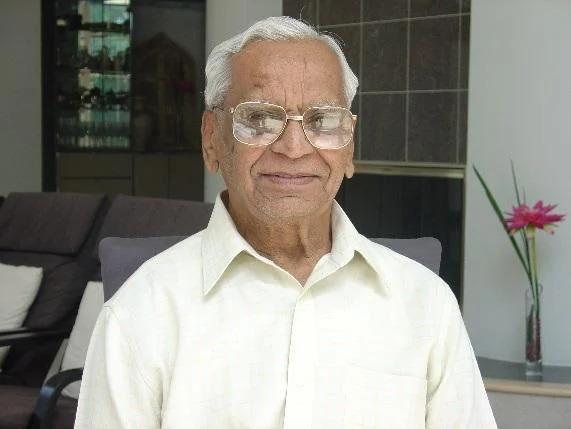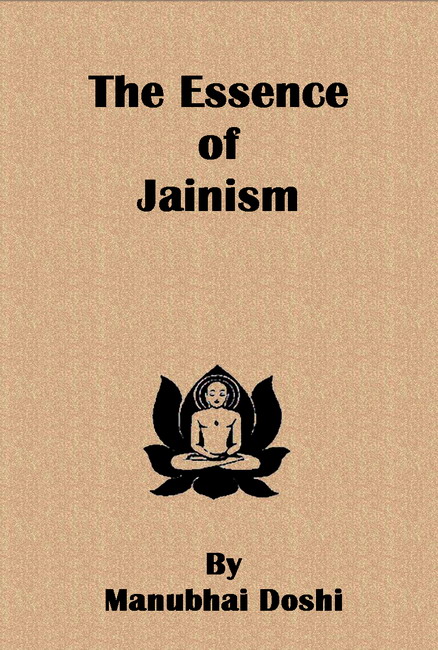Jain scriptures are popularly known as Aagamas. The term means what comes out (from the mouth of the Lord). It is generally accepted that whatever Lord Mahavir taught after gaining omniscience, was compiled by His Ganadharas in 12 parts, Sanskrit word for part is Anga. These 12 compilations are therefore called as 12 Angas and are collectively known as Dwadashangi. The foremost of these Angas is Aacharang Sutra. Other well-known Angas are Sutrakritang, Samavayang, Sthanang and Vyakhya Pragnapti which is more popularly known as Bhagavati Sutra. Based on these Angas, the seers also compiled 12 auxiliary works that came to be known as Upangas. These 24 compilations should have been completed by the time of Jambuswami who was the second successor of the religious order set up by Lord Mahavir and also was the last omniscient of the current time cycle.
It should be noted that these Angas and Upangas were not written for a long time. They were orally passed on by the preceptors to their pupils. Memory of the omniscient being infallible, they could have been retained in the original form up to the time of Jambuswami. Immediate successors of Jamuswami were known as Shrut Kevalis meaning that they knew all Angas and Upangs thoroughly well. During their time, however some variations seem to have crept in, since Samavayang and Nandisutra indicate some varying versions of Sutras. Shrut Kevalis and other prominent Acharyas also prepared subsidiary works known as Mul Sutras, Chhed Sutras etc. which were considered authorized versions of the Lord’s teaching. Dashvaikalik, Uttaradhyayan and Avasyak are the most well-known Sutras belonging to this category. By the time of Bhadrabahuswami who was the last Shrut Kevali, there came to be quite a few compilations that were admitted as Aagamas. They were written in Ardhamagadhi which was the language understood in the area where Lord Mahavir went about during His life.
About 160 years after the Lord’s departure, when Bhadrabahuswami was the head of religious order and Nand dynasty was ruling over Magadha, Pataliputra, the capital city became the center of learning and knowledge. That time, there occurred a severe famine that seems to have raged for 12 long years. During that period of shortage and scarcity, it was hard for Jain monks to observe the code of conduct laid down by the Lord. Bhadrabahuswami therefore decided to migrate to south along with many followers. (According to another version, he went to Nepal.) For those who stayed behind, it was hard to remember accurately whatever they had learnt. Hence there came about varying versions of Aagamas. Condition might have reached a chaotic stage. A convention was therefore called at Patliputra under the leadership of venerable Sthulibhadra, who was the principal disciple of Bhadrabahuswami. That convention prepared uniform version of all the Aagamas. In Jain traditions this is known as the first Vachana of Aagamas.
The version so prepared was however not found acceptable to most of those who had migrated to south. They considered the version unauthentic and contended that the original Aagamas had got lost. This was the first major cleavage among the followers of Lord Mahavir. In this connection it would be interesting to dwell a little in the background of this cleavage. When the Lord renounced the worldly life, he seems to have retained a single cloth to cover His body. During the first year of His renounced life, that cloth seems to have been worn, torn or entangled in thicket somewhere. After that He did not care to get another one. For the rest of life He therefore stayed without clothes. The immediate followers that He got after omniscience were also presumably unclad. Later on, followers of Parshwa traditions acknowledged His leadership. They were covering their bodies with two pieces of cloth. While admitting them in His fold, the Lord does not seem to have objected to their being clad. Thus His Sangha constituted clad as well as unclad monks amicably staying together. The amity between these two however might not have survived after the age of omniscients. Though there was no open dispute, there could have been some misunderstanding and unfriendliness between these two groups.
Venerable Sthulibhadra and most of those who stayed in north used to cover their bodies with plain, white cloth; while those who had migrated with Bhadrabahuswami were mostly unclad. With the open cleavage on the authenticity of the Aagamas. The latter took pride in their being true unclad followers of the Lord and in due course came to be known as Digambaras which means skyclad. Those on the other side came to be known as Shwetambaras on account of white cloth that they wore. The history of the Aagamas from that time onwards thus takes two different courses.
Even after Patliputra convention, Aagamas remained unwritten and continued to be passed on orally from preceptor to pupil. Memorizing must have taken its own toll. Moreover with the fall of Mauryan dynasty in 150 B.C., Patliputra ceased to be the main center of Jainism, because Mitra dynasty that took over, was not favorably inclined to it. There was therefore large scale migration of Jain monks and laymen towards Udaygiri (Near present Bhuvaneshwar) in the south-east and towards Mathura in the west. All these factors contributed once again to variations in the version of Sutras. By the end of the first century, most probably in 97 A.D., another convention was called at Mathura under the leadership of Hon’ble Skandilacharya. Curiously enough, another convention was simultaneously held at Valabhipur in Saurashtra under the leadership of Hon’ble Nagarjunacharya. There were some differences in the versions arrived at the two conventions. We are not exactly sure whether any attempt was made to reconcile the v arying versions. Anyway, this is called second Vachana of the Aagamas.
That time too, the Aagamas remained unwritten. Variations in the version were therefore bound to occur. Ultimately one more convention was held at Valabhipur in 454 A.D. under the leadership Devardhigani Khshamashraman. Authorized Version of all the Aagam as (Presumably 84) was prepared at that convention and they were for the first time written down. With the passage of time some of the Aagamas got lost and some got destroyed during Muslim invasions. At present following 45 Aagamas are available that are acceptable to Shwetambar Murtipujak sect:- 11 Angas (The 12th one lost long back), 12 Upangas, 4 Mul Sutras, 6 Chhed Sutras, 10 Misc. and 2 Chulikas.
Digambars started writing their text of Aagamas on the basis of knowledge at their command. Acharyas Dharsen and Gundhar who happened to be in the line of Bhadrabahuswami, were very knowledgeable. Their successors prepared the Shatkhandagam, Gomatasar, Labdhisar etc. that are collectively known as Pratham Shrut Skandha or the first collection of scriptures.
This could have occurred sometime after the Patliputra convention. During the second century A.D. the most venerable Kundkunacharya wrote Samayasar, Pravachanasar, Niyamasar, Panchastikaya, Ashtapahud etc. which are known as Dwitiya Shrut Skandha or second collection of scriptures. His Samayasar, Pravachanasar and Panchastikaya are held in high esteem even by Non-Digambaras. Digambar saints accept these works as the most authentic Jain Aagamas and most of the subsequent Digambar literature is based on t hem. In about 200 A.D. Hon’ble Umaswati wrote his Tattwarthasutra giving the entire essence of Jainism in Sanskrit language. Luckily this book happens to be acceptable to all the sects of Jainism. This shows that despite the outward differences, there are no disputes among them about any of its fundamentals. Several learned commentaries have been written on this book by many Acharyas of both the denominations.
Subsequent well known author is Hon’ble Siddhasen Diwakar who lived during the time of Vikramaditya. He seems to have written on many aspects of Jainism. His Sanmatitark is considered a masterly book and is enthusiastically studied by scholars even at pre sent. Sarvartha Siddhi of Pujyapadswami in 5th or 6th century and Shaddarshan Samucchaya and Yoga Drishti Samucchaya of Acharya Haribhadrasuri in 8th century are the major works after the compilations of Aagamas. By that time idol worship was firmly estab lished and many temples were set up. This necessitated the help of well-versed persons for consecrating the idols and for performance of various rituals. In Shwetambar sect this led to the rise of renegade monks known as Yatis. They used to stay in the te mples and therefore came to be known as Chaityavasis. They lived in affluence and availed of all the comforts of life. Haribhadrasuri was the first to castigate their excesses. The evil however seems to have continued long after that.
Noteworthy works after this period are Mahapuran of Digambar Acharya Jinsen (770-850) and Trishashti Shalaka Purush of Hemchandracharya (1088-1173). Both these works are voluminous and deal with the lives of Tirthankaras and other illustrious personalities. Serious efforts were made to curtail the excesses of Yatis in 11th century by Vardhamansuri. This was continued by his successors Jineshwarsuri and Jindattasuri. The latter is popularly known as Dada. He founded Kharatar Gacchha meaning purer sect in about 1150. The excesses Yati however seems to have survived that onslaught.
So far we have talked about contribution of well-known Acharyas. Now we come to the contribution of a householder. He was Lonkashah of Ahmedabad. He could not believe that the excesses of Yatis could have religious sanction. Scriptures were however not accessible to householders. Luckily, a monk once happened to see the neat handwriting of Lonkashah. He therefore entrusted the latter to make copies of scriptures. While doing that Lonkashah also prepared copies for himself and studied them carefully. Equipped with that knowledge he came out with a heavy hand against Chaityavasis in 1451. Based on his study of Aagamas, he also disputed idol worship as being against original Jain tenets. This was preamble to setting up Sthanakwasi sect which came into being as non-idol worshippers in 1474. Bhanajimuni was the first known Muni of that sect. Shwetambar sect was thus divided into two sub-sects. This division was however helpful in dealing death blow to the evils of Yatis. Sthanakwasis introduced strict code of conduct for their monks in contrast to Chaitywasis.
Hirvijayasuri was the well-known Acharya of the next century. He seems to have impressed even emperor Akabar who issued proclamation forbidding animal slaughter on certain days. Poet Banarasidas also lived during that period. He was born in a Shwetambar f amily and was an easy going youth. He however happened to read Samayasar and was very much impressed. He has written SamayasarNatak which is a dramatic version of Samayasar. The next two well-known personalities are Yogi Ananadghanji and Upadhyaya Yashovi jayaji. The real name of the former was Labhanandji. Since he remained more absorbed in the nature of soul, he is popularly known as Anandghanji. He has written many thought provoking Padas. The most well-known is his Ananadghan Chovisi that contains devotional songs in admiration of all the 24 Tirthankaras. Upadhyaya Yashovijayaji was a prolific writer. He has written on almost every aspect of Jainism in Sanskrit, Prakrit and Gujarati languages. Soon after that Acharya Bhikshu split the Sthanakvasi sect in 1727 on the issue of role of charities etc. in Jainism. The new sect that was set up is known as Terapanthi sect.
The last one to be mentioned is Shrimad Rajchandraji who was born in 1868. He was a highly gifted person. He could heavily impress even Mahatma Gandhi, who considered Shrimad as his guide. He has compiled many devotional songs and has written at length about the true nature of soul in the form of letters. Most of his writings is in Gujarati language. Mokshamala and Atmasiddhishastra are his outshining independent publications that have influenced lot of people. He had plans to propound the true Jainism afresh. Unfortunately however he did not survive long and left the mortal body in 1901 at the young age of 33.
 Manubhai Doshi
Manubhai Doshi
